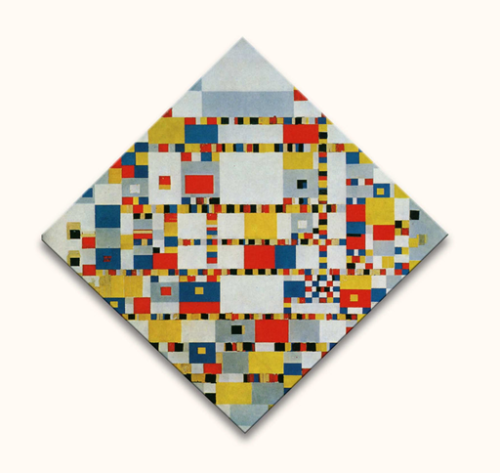-
Content Count
279 -
Joined
-
Last visited
-
Days Won
5
Posts posted by Die Holländer
-
-
Many VCL applications have been developed over the years with direct database access, which has become increasingly problematic in modern software environments.
As a result, developers often feel forced to transition to web-based solutions, such as sending JSON over the internet to abstract away direct database access (e.g., for login functionality).
However, this shift presents significant challenges. One major hurdle is the need to create endpoints for the countless SQL queries accumulated over time, while also transforming the rich and responsive VCL GUI into web pages.
Although modern frameworks offer solutions for this transition, the process of converting database-driven VCL applications remains highly resource-intensive.
These frameworks are particularly effective when building applications from scratch. But for developers who prefer to maintain their existing VCL applications and avoid going fully web-based, the question arises: is there a way to address the database access issue without a complete overhaul?
Could a solution exist at the database driver level—a kind of bridge between the database server and the client driver (e.g., FireDAC)—that eliminates the need to convert data into formats like JSON and then back into VCL controls or custom DataObjects?
-
Very difficult to understand your question..
You talk about a stringgrid but in the code you posted the grid isn't mentioned.
You talk about a value? What value? All the valueS (more values) in the rows of the grid?
-
Maybe in combination with:
-
bds.exe /ProductInfo:Trial- returns True/False if the product is a Trial version.
-
-
Enterprise returns Enterprise..
So "Personal" seems the Community Edition.
-
What does the professional edition say in the "Detail" properties of the bds.exe? Also “Personal”? (or Professional)
-
1 minute ago, dmitrybv said:dcc32.exe is present in RAD Studio 12.3 Community Edition.
It runs without errors.
After running dcc32.exe %ERRORLEVEL% = 0.What error do you get when you compile something with dcc32.exe from the Community Edition.
Can't you catch this error and make you decision based on that?
-
There is this small component I use for ages (CEVersionInfo) that takes the version info from the Delphi IDE. (Menu-Projects-Project Options-Version Info)
In the IDE I put the Delphi version name into the "Comments" field and in the program source you can use it just like: "myEdit.Text:=CEVersionInfo.Comments"
I've searched the web for the component but only saw some sites where I didn't dare to click to..
I'm willing to publish the source because there is no copyright involved and it is quite small code.
It can take the following info fields:
FCompanyname :='<info not available>'; FFileDescription :='<info not available>'; FFileVersion :='<info not available>'; FInternalname :='<info not available>'; FLegalCopyright :='<info not available>'; FLegalTradeMarks :='<info not available>'; FOriginalFilename :='<info not available>'; FProductName :='<info not available>'; FProductVersion :='<info not available>'; FComments :='<info not available>'; FMajorVersion :='<info not available>'; FMinorVersion :='<info not available>'; FRelease :='<info not available>'; FBuild :='<info not available>';
-
Last week I also needed such timeline component and I started with the basic Jedi Timeline component.
It is a basic component but with a bit of programming and the use of an extra StringGrid for the
right side, a ScrollBox (horizontal scroll) and extra Scrollbar (vertical scroll) I got all the functionality I needed.
It has an imagelist property to display images in the timeline.
-
 1
1
-
-
15 hours ago, corneliusdavid said:The quickest and cheapest way was to add Thinfinity VirtualUI to the Delphi code and set up a server where the Delphi app could access the data locally and all users use the app through a web browser--with very minimal changes to the code (still Delph XE VCL!). It works great and everyone is happy.
Could you clarify what you mean by "cheapest way" and can you tell more about the cost and your environment?
Their website doesn’t provide any information about pricing, which I believe could negatively impact their sales.Potential customers are discouraged when they have to contact a company just to get basic cost information.
It would be helpful if they included some example use cases along with the associated costs.
For example, if I already have a cloud-based database solution (e.g., MSSQL/Azure File storage/Office365) with 30 users andseveral Delphi applications, what would be the estimated cost of implementing a VirtualUI solution?
-
1 hour ago, Serge Pilko said:A few months later, the client returned for an estimate to migrate other Delphi projects to a web-based platform.
I'm looking forward to the full story of this project.
Are you going the Delphi route (webserver, webcore, UniGui, etc..) or (Java)script API - end-points - back-end HTML CSS front-end route?
1 hour ago, Serge Pilko said:✅ Migrated from Delphi 7 to Delphi 12
✅ Replaced BDE and Indy 9 with FireDAC and Indy 10
✅ Refactored code for cross-platform compatibility
✅ Delivered a modernized UI with preserved workflow familiarity
Bravo ! 😎🏅🏆
-
-
-
14 hours ago, bazzer747 said:
dm.qvCompEnrolments.Open('SELECT * FROM vPGCCompEnrolments ORDER BY Yes DESC, Maybe DESC');Another example of a datamodule hell and query statements in a GUI form..😒
-
There must be something in the .DFM files where you can see if it is a specific report form, like a component class/name or a specific button name.
Can't you search in your .DFM text files for such indicator? The name of the .DFM file is then the same as the .PAS file.
-
I found some old code to retrieve the list of a group, like "Global Address List"
The code here is based on to put the addresses in a TreeView.
I checked the code and it is still running OK but I noticed that I don't see the e-mail addresses
anymore but instead it reports a string like: "/o=ExchangeLabs/ou=....."
Maybe this is because of the exchange server configuration in my environment.
see: how-to-get-email-address-from-o-exchangelabs-ou-exchange-administrative-group
You have to play with it to see if you get the proper info you want.
Maybe you can post the final answer here if you find the proper addresses..
Note that the code has a filter to only show two groups:
If (CurGroupName='All Groups') or (CurGroupName='Global Address List') Then...
//Uses Outlook2000; Procedure TMailTrans.CreateGALTreeForSendMailItem(aTreeView : TTreeView); Var pProp : PSPropValue; MP : IMAPIProp; strAddress : String; i, j, Check: Integer; myAddressList: AddressList; myAddressLists: AddressLists; myAddressEntries: AddressEntries; myAddressEntry: AddressEntry; CurNode, ChildNode, DetailNode :TTreeNode; CurGroupName : String; begin If NmSpace=NIL Then Begin OutlookApplication1.Connect; NmSpace:=OutlookApplication1.GetNamespace('MAPI'); NmSpace.Logon('', '', False, False); End; myAddressLists := IUnknown(NmSpace.AddressLists) as AddressLists; aTreeView.Items.BeginUpdate; aTreeView.Items.Clear; for i := 1 to myAddressLists.Count do begin CurGroupName:=myAddressLists.Item(i).Name; If (CurGroupName='All Groups') or (CurGroupName='Global Address List') Then Begin CurNode:=aTreeView.Items.Add(Nil,myAddressLists.Item(i).Name); CurNode.ImageIndex:=2; CurNode.SelectedIndex:=2; myAddressList := myAddressLists.Item(i); if Assigned(myAddressList.AddressEntries) then Begin myAddressEntries := myAddressList.AddressEntries; for j := 1 to myAddressEntries.Count do begin strAddress:='Unknown'; myAddressEntry := myAddressEntries.Item(j); if Assigned(myAddressEntry) then Begin if myAddressEntry.MAPIOBJECT<>NIL then Begin if Assigned(myAddressEntry.MAPIOBJECT) then Begin { Check:=IUnknown(myAddressEntry.MAPIOBJECT).QueryInterface(IMailUser,MP); If Check=0 then MP:=IUnknown(myAddressEntry.MAPIOBJECT) as IMailUser else MP:= IUnknown(myAddressEntry.MAPIOBJECT) as IDistList; if S_OK = HrGetOneProp(MP, $39FE001E, pProp) then begin strAddress:=String(pProp.Value.lpszA); MAPIFreeBuffer(pProp); end; // else strAddress:=myAddressEntry.Address; } strAddress:=myAddressEntry.Address; ChildNode:=aTreeView.Items.AddChild( CurNode, myAddressEntry.Name); ChildNode.ImageIndex:=7; ChildNode.SelectedIndex:=7; DetailNode:=aTreeView.Items.AddChild( ChildNode, strAddress); DetailNode.ImageIndex:=6; DetailNode.SelectedIndex:=6; End; End; { DetailNode:=aTreeView.Items.AddChild( ChildNode, myAddressEntry.Address); DetailNode.ImageIndex:=6; DetailNode.SelectedIndex:=6; } End; End; End; end; //Application.Processmessages; end; aTreeView.Items.EndUpdate; end;-
 1
1
-
-
Can't you create a complete Richtext (RichText+TabelText+RichText) during the process and add the whole RichText on the Band?
-
Wow.. That's quite a list of qualifications you want..
C#, .NET, ASP.NET(Blazor), Delphi, C++, JavaScript, HTML5, CSS3, SQL, Python, embedded systems development.
-
Maybe this is what you need..
You have to tell TidHTTP that it should return the error JSON message and not only the HTTP error code.
Result:=False; idHTTP.Request.ContentType := 'application/json;odata=verbose'; //Tell the idHTTP that it should NOT ignore the (JSON) errormessage returned by the server. idHTTP.HTTPOptions := idHTTP.HTTPOptions + [hoNoProtocolErrorException, hoWantProtocolErrorContent]; //Add the message in a string var. ReceiveData := idHTTP.Put(Param, JsonToSend); if (idHTTP.ResponseCode div 100) = 2 then begin Result:=True; end else Begin //Parse/Show the message aMessage:=CreateErrorMessage(ReceiveData); End; -
You only show the JSON parsing part. What do you use to perform the Put? (Like TidHTTP?)
-
2 hours ago, Rollo62 said:I haven't looked into this, but perhaps its related to the Azure stuff and a later extension:
Yes, these are basically the pages reflecting what Glenn shows in the Youtube video.
As you can see almost all of the development, configuration, testing and deploying is
based on Visual Studio Code (extensions) and only the "Hello world" webbroker exe is made in Delphi.
I was hoping that the "Azure IDE helper plugin" will bypass the Visual Studio Code part.
Another thing is that it's also difficult to go through the Azure deploying part by it's dashboard
that supports now about 100 zillion Cloud possibilities, options and configurations.
-
 1
1
-
-
15 hours ago, EugeneK said:No, I'm trying to reverse engineer it. It uses AMQP 1.0 over WebSockets
Maybe there is something possible with Python4Delphi and Pika...
-
I really hope that Embarcadero will investigate the possibilities of using Azure with Delphi.
During the session in this youtube video about Azure Cloud Development with Delphi
I saw a statement (at time 40:38) : "Azure IDE helper plugin under development by Glenn Dufke"
I have tried to configure an Azure function myself but the Azure Portal interface has been changed a lot
and I didn't succeed. I don't know if he ever completed such a plugin but I've tried to find and ask
him but didn't succeed.
-
1 hour ago, Squall_FF8 said:I dont understand your question ....
I was just wondering why you use a cache list. I use a DBGrid in one of my projects and added the calculated fields as extra columns in the DBGrid and to the FieldDefs of the query. Also in my case there is a file read calculated field and I hardly see any speed difference while displaying the resultset of the databse including the calculated fields. So, I never have used a cache list and I was just wondering why you need one, but as Uwe explained that sometime you need a cache list if the process is too slow and probably if you don't use a DBGrid.
-
25 minutes ago, Uwe Raabe said:A solution is to cache these values.
But a dataset like DBGrid or client dataset is caching the calculated field values, right?
![Delphi-PRAXiS [en]](https://en.delphipraxis.net/uploads/monthly_2018_12/logo.png.be76d93fcd709295cb24de51900e5888.png)




addng a field to an existing file
in Databases
Posted · Edited by Die Holländer
Try after the add
BudSys_DB.FieldDefs[4].CreateField(BudSys_DB);
or
Private:
AmountField : TFloatField;
Implementation:
AmountField := TFloatField.Create(BudSys_DB);
AmountField .FieldName := 'Amount';
AmountField .Calculated := True;
AmountField .DataSet := BudSys_DB;
AmountField .Name := BudSys_DB.Name + AmountField .FieldName;
BudSys_DB.FieldDefs.Add('Amount',ftFloat, 0);
Destroy:
AmountField.Free;